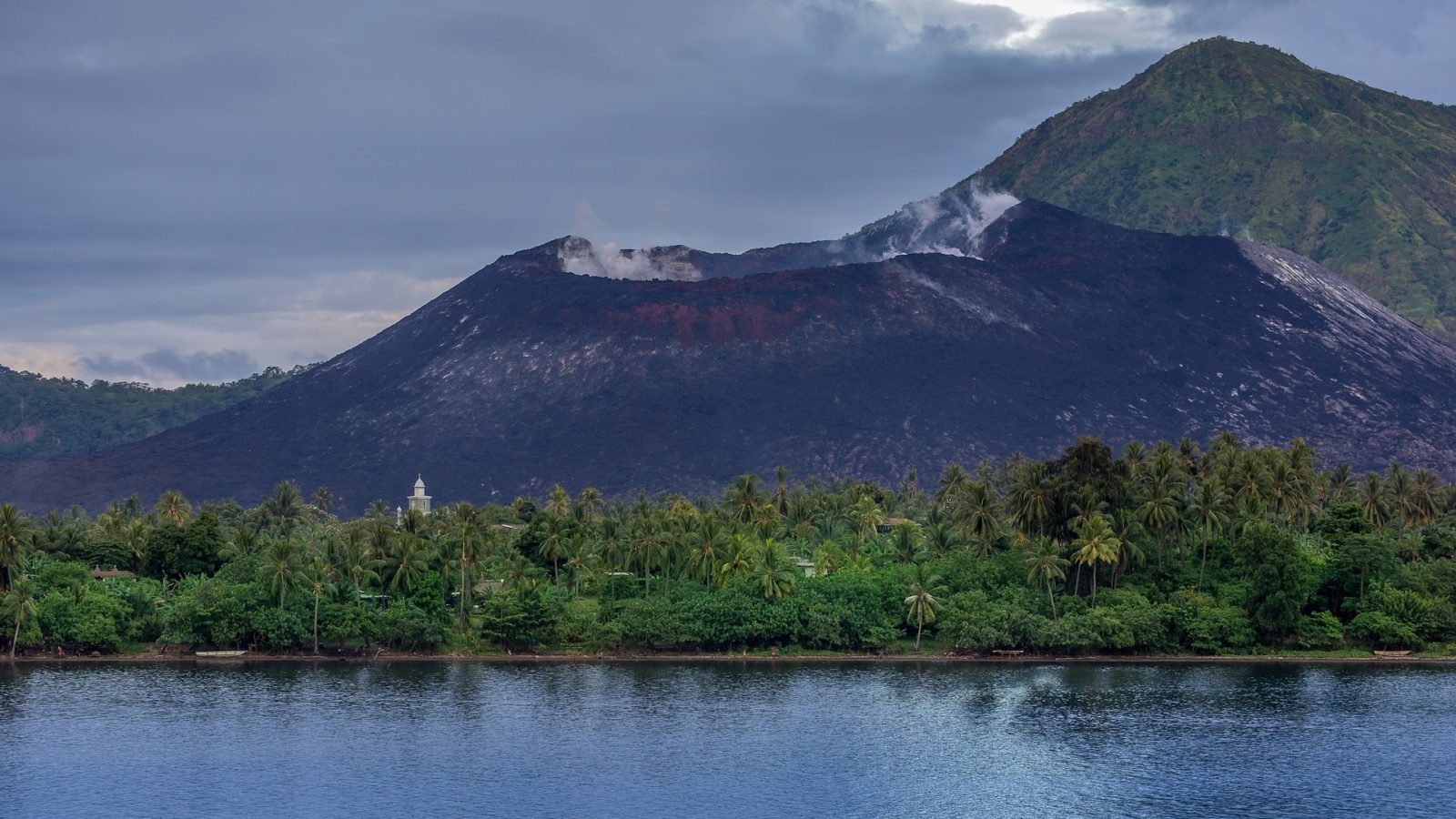Puna Geothermal Venture facility, Hawai‘i’s only geothermal plant, is reopening on the Big Island following two years of closure. As the most petroleum-dependent state in the nation, Hawai‘i is dedicated to phasing out fossil fuels in favor of renewable energy sources. The reopening of the Puna geothermal plant, while wrought with its own controversies, has the potential to help Hawai‘i move towards a cleaner and less fossil-fuel reliant future.
How Geothermal Works in Hawai‘i
Geothermal power plants use steam to produce electricity. The steam comes from reservoirs of hot water found a few miles or more below the earth’s surface. Geothermal energy has primarily been used to produce electricity on the Island of Hawai‘i (the Big Island) by drilling wells of over 5,000 feet into geologic hot spots along a rift zone of the Kīlauea volcano. Wells tap into areas where fluid is found at a high temperature with enough pressure and rock permeability. The presence of these wells creates changes in pressure which force steam containing toxic hydrogen sulfide and brine (water carrying silica and heavy metals) to rise to the wellhead. From the wellhead, the steam either directly powers turbines or heats a secondary fluid, pentane, which runs the turbines, is cooled, and is then reheated again. After the steam has been used by the plant, it is disposed of with the brine by either being released into surface “ponds” or by being reinjected back underground via injection wells.
Controversial Geothermal Development in Hawai‘i
In 1973, the U.S. Department of Energy and the National Science Foundation assisted the state of Hawai‘i with grants to fund geothermal research on the Big Island. The research resulted in the development of Hawai‘i’s first commercially viable geothermal well, called the Hawai‘i Geothermal Project-Abbott (HGP-A). Drilling began without environmental impact studies or a period for public input.
For over ten years, the well and associated power plant operated without proper pollution abatement technology or regulatory oversight from the state or federal government. Steam and brine were disposed of in unlined pits and hydrogen sulfide was released into nearby neighborhoods during regular well cleans and accidents. In 1989, local residents submitted a petition to the County Civil Defense Agency and Planning Department requesting that HGP-A’s permit be revoked. The petition cited a total of fourteen days during the previous three months when the hydrogen sulfide abatement system failed, allowing deadly hydrogen sulfide gas to leak into the air. Persuaded by these complaints and another major leak, the Planning Department issued an “immediate action plan” to keep HGP-A operating only until the newly constructed Puna Geothermal Venture (PGV) facility was functional.
The Puna Geothermal Venture began in 1980 as a joint venture to develop geothermal power on a 500 acre parcel of land 21 miles southeast of Hilo, Hawai‘i. In 1986, PGV secured a contract with Hawaiian Electric Industries (HELCO), the largest supplier of electricity in the state of Hawai‘i, to supply 25 megawatts (MW) of electricity by 1993. PGV was bought by Ormat Energy Systems, Inc. (Ormat) in 1989, who re-designed PGV’s proposed power plant to include different turbines and a different cooling system that they claimed would result in zero emissions and operate at a drastically lower noise level than the failed HGP-A. While PGV has not been successful at preventing gas leaks, they have had cleaner operations than HGP-A.
PGV had a generating capacity of 25 MW when it opened in 1993, which was expanded to 30 MW in 1995 and 38 MW in 2012. By 2017, PGV was supplying 31% of the electricity on the Big Island (not the entire Hawaiian island chain). With 57% of the island’s power coming from renewable sources such as solar, wind, and geothermal, PGV was responsible for more than half of all renewable energy generated on the island. Mark Glick, an energy policy and innovation specialist at the Hawaii Natural Energy Institute, called PGV the “anchor of the renewables’ load for the Big Island.”
Closure of PGV
On May 3rd, 2018, the lower Puna volcanic eruption began in Kilauea’s East Rift Zone. Lava fountains, lava flows, and volcanic gas were preceded by earthquakes and ground deformation. PGV, concerned about possible toxic hydrogen sulfide gas releases and explosions at the facility, began shutting down equipment and removing the 60,000 U.S. gallons of highly-flammable pentane.
The eleven wells were stabilized with cold water and then sealed with metallic plugs. Lava flows approached several of the capped wells on May 27th and completely covered two. On May 30th, a substation and a third well were covered with lava. PGV subsequently closed and fossil fuel powered generators were brought online to keep the Big Island from losing power.
Moving Forward
With the PGV closure in 2018, the Big Island has been burning “residual fuel” composed of the oily leftovers of the refining process ever since. Plans to resume geothermal power production by the end of 2019 were delayed by permitting issues that pushed back expectations. With additional issues related to the COVID-19 pandemic, PGV was forced to move their reopening to the end of September 2020.
Ormat, the owner of PGV, has used the time to further develop the facility and begin an expansion process. They reported last month that two new production wells had been drilled and that more well drilling work would continue.
PGV has also had to deal with environmental groups concerned with accidents relating to hydrogen sulfide. Earlier in September, the state’s Department of Land and Natural Resources denied an environmental review request by Pele Defense Fund, an advocacy group for traditional Hawaiian practices. According to State Health director Bruce Anderson, the Hawai‘i Department of Health took “a hard look at all the environmental factors” and determined a new or supplemental review was not needed for the plant’s reopening.
PGV Senior Director Mike Kaleikini stated on September 23rd that the plant plans to initially bring online its smallest unit, which produces 3 MW of power. Energy production is expected to gradually ramp up to 29 MW of power by the end of 2020. The company also intends to expand the plant’s 38 MW capacity by 8 MW in 2022.
The Relevance of Geothermal in Hawai‘i
The reopening of the plant helps set Hawai‘i back on track for the goals established in the 2008 Hawai‘i Clean Energy Initiative (HCEI), a partnership between the Hawai’i State and Federal U.S. Department of Energy. The HCEI is an attempt to reduce the state’s reliance on petroleum and other fossil fuels for energy production. Its heavy dependence on imported petroleum and isolated island grids contribute to Hawai‘i having the highest average retail electricity price for all sectors of any state in the nation.
The initial overall HCEI goal was a 70% clean energy economy by 2030, counting both renewable resources and efficiency gains. In 2015, the state’s renewable portfolio standard (RPS) was amended to make Hawai‘i the first state to set a legally required deadline of obtaining 100% of its electricity from renewable sources by 2045. The policy statements of HCEI stress the following: minimizing oil dependence, implementing renewable resources that have lower greenhouse gas content, maximizing the amount of energy derived from indigenous resources, and pursuing energy efficiency measures that are cost-effective.
Although Hawai‘i is still heavily dependent on fossil fuels, the abundance of renewable energy sources the islands boast gives the state great renewable energy potential. Renewables currently supply 19% of Hawai‘i’s electricity generation. The primary sources of renewable energy are solar, wind, biomass, and geothermal.
- Solar: Hawai‘i’s total solar power provides more than half of the state’s total renewable generation, primarily because of the growth of small-scale, customer-sited solar photovoltaic (PV) generation, which has almost doubled since 2014. As part of Hawai‘i’s commitment to its 100% renewable energy goal, state building codes require all new single-family homes to have solar hot water heaters.
- Wind: Wind energy generates almost 26% of the state’s renewable-based electricity, with 120 wind turbines scattered across the island chain. Several offshore wind projects have been proposed for federal waters around Oahu, and the U.S. Bureau of Ocean Energy Management has sought additional nominations from companies interested in offshore commercial wind energy leases.
- Biomass: Biomass accounts for about 13% of the state’s total renewable generation. Biomass, mostly consisting of agricultural wastes such as bagasse from sugarcane, has long been used in rural Hawaii to generate heat and electricity. With the closure of many sugar plantations, that source has declined, but biomass still has an important role in renewable energy production for Hawai‘i. The 120 MW Campbell Industrial Park Generating Station, which began service on O‘ahu in 2010, is believed to be the world’s largest commercial electricity generator fueled exclusively with biodiesel.
- Geothermal: Hawai‘i is one of seven states with utility-scale electricity generation from geothermal resources, which provides about 5% of the state’s renewable electricity supplies.
While the loss of PGV only leads to a 5% decline of Hawai‘i’s renewable energy generation (for the entire island chain not just for the Big Island), it also prevented the further development of geothermal energy. Before shutting down in 2018, PGV was generating 38 MW of electricity. Research done by the Hawai‘i State Energy Office in 2016 suggests that there may be more than 1,000 MW of geothermal reserves on the Big Island, which would be enough to collectively power Maui, the Big Island, and about one quarter of O’ahu.
The reopening of PGV has the potential to help Hawai‘i move towards a cleaner and less fossil-fuel reliant future. Solar and wind energy are the largest sources of renewable energy for the state, but geothermal plays a vital role in the implementation of the Hawai‘i Clean Energy Initiative. It is essential that Hawai‘i continues to invest in and prioritize clean sources of energy moving forward to reach the state’s goal of 100% renewable electricity by 2045.









